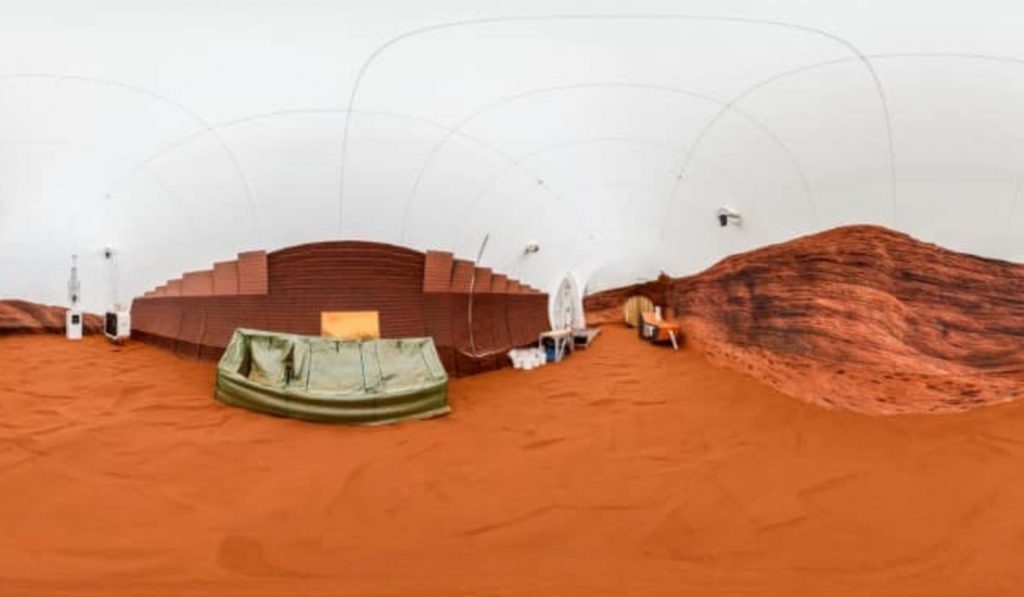According to CBS, NASA started a new mission called CHAPEA 1 where four non-astronaut volunteers are locked inside a simulated Mars habitat.
The group consists of research scientist Kelly Haston, structural engineer Ross Brockwell, emergency medicine physician Nathan Jones, and US Navy microbiologist Anca Selariu. They will stay in the Mars simulator, which is made using 3D printing, for a total of 378 days.
CHAPEA 1 is the first of three planned CHAPEA simulations and is designed to help us learn more about the “potential impacts of long-duration missions to Mars on crew health and performance,” as NASA’s Grace Douglas, the mission’s principal investigator, said in an April statement.
“Thank you all for your dedication to exploration,” Douglas told the crew during a Sunday briefing. “Our best wishes go with you.”
According to NASA, the simulator includes “private crew quarters, a kitchen, and dedicated areas for medical, recreation, fitness, work, and crop growth activities, as well as a technical work area and two bathrooms,” all within just 1,700 square feet.
This mission is extremely challenging due to limited space and various difficult tasks. CBS highlights that the crew has to handle equipment failures, cope with environmental stress, deal with limited resources, perform simulated spacewalks, and grow crops. In addition to all that, they must also maintain their exercise routines, and hygiene practices, and prepare their own meals.
Let’s face it, most of us struggle with managing exercise and hygiene on a regular basis, and here these volunteers have to do it while being trapped inside a Mars simulator with three other adults for an entire year.
Close quarters aside, Haston, who has been crowned the team’s commander, commended her fellow crewmates during the press briefing as an “amazing group of dedicated individuals who feel very passionate about space exploration and science,” adding that space exploration “exemplifies some of the best qualities of humankind.”
“The crew has worked so hard this month to get ready for this mission,” said Haston. “It has been very special to be a part of such a tremendous group of scientists and specialists from a diverse set of backgrounds working together to bring CHAPEA 1, the first of three missions, to reality.”

